 Search by Keyword
|
“ONE AFTER 909”
(John Lennon – Paul McCartney)
 There are many accounts in musical history of songwriters and/or recording artists who had reservations about particular songs, but then had second thoughts and were convinced to release what became highly acclaimed and successful recordings. For example, Cher despised “I Got You Babe” when Sonny Bono first played it to her. She reluctantly recorded it with him with the understanding that this “dog” would only appear as a b-side. The band Lynyrd Skynyrd was told that “Sweet Home Alabama” would never amount to anything because the lyrics were too regional. Therefore it was initially rejected for inclusion on their album “Second Helping,” let alone to be released as a single. Stories like these are virtually endless. There are many accounts in musical history of songwriters and/or recording artists who had reservations about particular songs, but then had second thoughts and were convinced to release what became highly acclaimed and successful recordings. For example, Cher despised “I Got You Babe” when Sonny Bono first played it to her. She reluctantly recorded it with him with the understanding that this “dog” would only appear as a b-side. The band Lynyrd Skynyrd was told that “Sweet Home Alabama” would never amount to anything because the lyrics were too regional. Therefore it was initially rejected for inclusion on their album “Second Helping,” let alone to be released as a single. Stories like these are virtually endless.
 Although not a big hit, it's undoubtedly hard for any Beatles enthusiast (of which there are still millions today) to imagine “One After 909” not being included in the group's catalog. A very early attempt at songwriting, John Lennon reluctantly brought it forward for The Beatles to record when they were looking for new material in early 1963. The results were considered substandard by both them and their producer, giving rise to the opinion that it should remain unissued after all. Although not a big hit, it's undoubtedly hard for any Beatles enthusiast (of which there are still millions today) to imagine “One After 909” not being included in the group's catalog. A very early attempt at songwriting, John Lennon reluctantly brought it forward for The Beatles to record when they were looking for new material in early 1963. The results were considered substandard by both them and their producer, giving rise to the opinion that it should remain unissued after all.
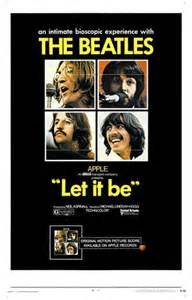 Six years later, when once again scrambling for material to be recorded by The Beatles, John dredged up “One After 909” from his memory and presented it a second time. On this occasion, it was reworked with enthusiasm and with a different feel and arrangement, the result becoming a cherished presentation of early Beatlemania at their final live performance. What would the rooftop concert and the “Let It Be” film and soundtrack album be without “One After 909”? Six years later, when once again scrambling for material to be recorded by The Beatles, John dredged up “One After 909” from his memory and presented it a second time. On this occasion, it was reworked with enthusiasm and with a different feel and arrangement, the result becoming a cherished presentation of early Beatlemania at their final live performance. What would the rooftop concert and the “Let It Be” film and soundtrack album be without “One After 909”?
Songwriting History
George: “We should do it...It's from the first ones, from 1958.”
Paul: “It's great, that one!”
John: “I always wanted to just change the words a bit and do something...”
Paul: “But, no, it's great...I never, sort of, knew what it was about before. I mean, so she's on a train...”
John: “Yeah, he goes to the station.”
Paul: “But he goes back and finds that it was the wrong number, so...”
George: “The wrong location.”
John: “Because it rhymes with 'station,' you know.”
Paul: “Our kid (his brother Michael) has been saying 'You should do that' for years. 'Well you know, Mike, you don't understand about these things, you know.'”
John: “We always thought it wasn't finished, that one. Couldn't be bothered finishing it...I always meant to just change the words a bit and do something better.”
George: "It's not worth it."
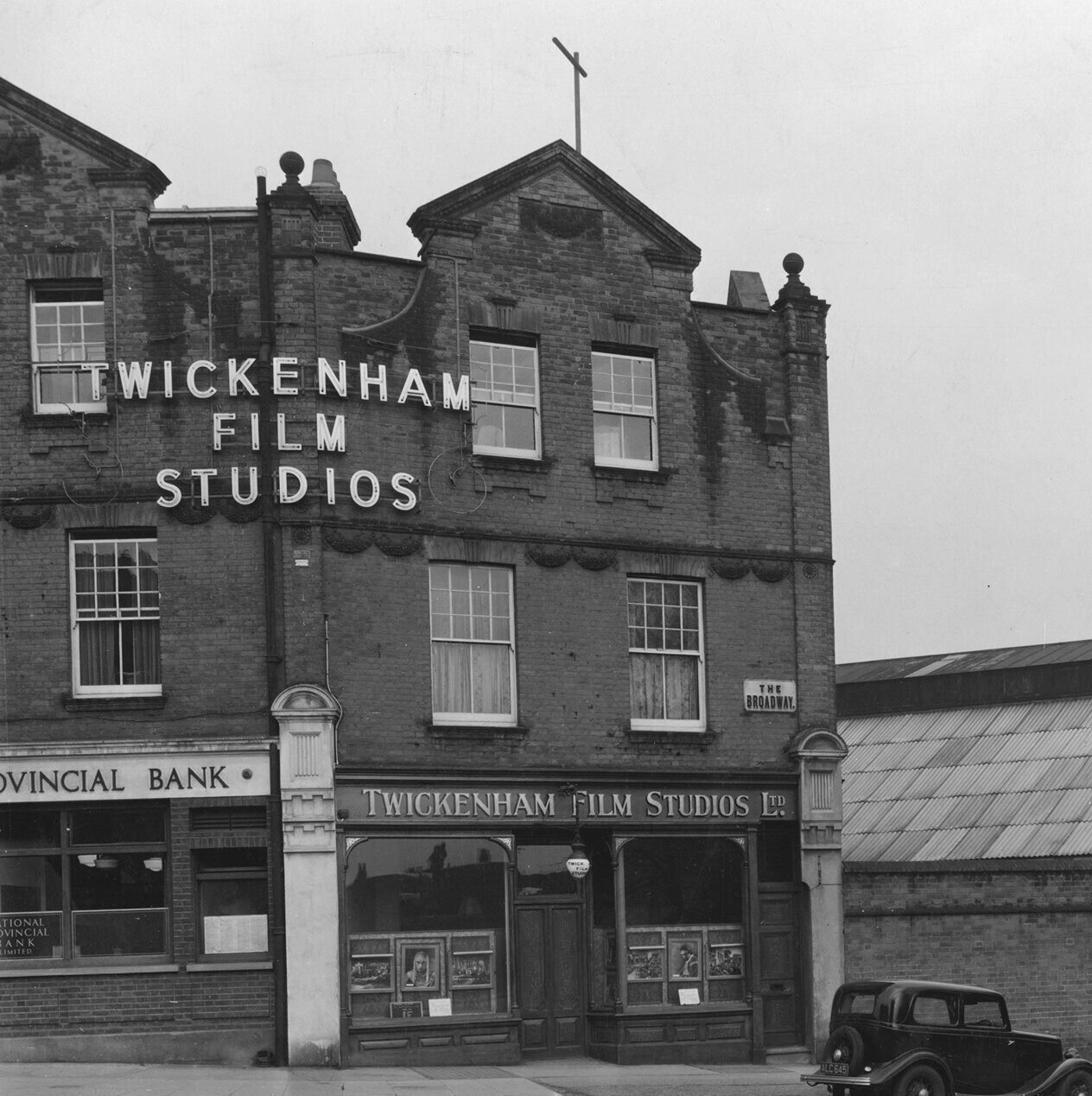 This dialogue between John, Paul and George occurred on January 3rd, 1969 at Twickenham Film Studios after running through an impromptu version of “One After 909” during the rehearsals for what eventually became the “Let It Be” movie and soundtrack album. It was their habit during these sessions to revisit songs from their past. With this song, however, the above discussion shows them deciding to seriously consider including it in their project, which they did, in fact, end up doing. This dialogue between John, Paul and George occurred on January 3rd, 1969 at Twickenham Film Studios after running through an impromptu version of “One After 909” during the rehearsals for what eventually became the “Let It Be” movie and soundtrack album. It was their habit during these sessions to revisit songs from their past. With this song, however, the above discussion shows them deciding to seriously consider including it in their project, which they did, in fact, end up doing.
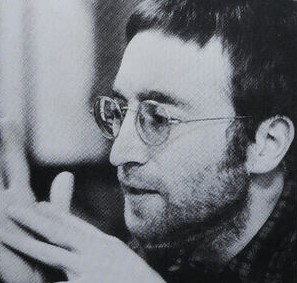 “The 'One After 909' on the whatsit LP (“Let It Be”) is one that I wrote separately from Paul, when seventeen or eighteen in Liverpool,” John stated in 1970. Since there is evidence that John included the song in the repertoire of his skiffle band “The Quarrymen” as early as 1957, this would indicate that it was most likely written in that year when he was approximately seventeen. “The 'One After 909' on the whatsit LP (“Let It Be”) is one that I wrote separately from Paul, when seventeen or eighteen in Liverpool,” John stated in 1970. Since there is evidence that John included the song in the repertoire of his skiffle band “The Quarrymen” as early as 1957, this would indicate that it was most likely written in that year when he was approximately seventeen.
 In his 1980 Playboy interview, John recalls: "I wrote it when I was about seventeen, either right before or after 'Hello Little Girl' (later recorded by Gerry & The Pacemakers and The Fourmost), and it was resurrected for (the 'Let It Be') album, probably for lack of material. Nine has always been around. I'm not sure why. I was born on the ninth of October, I lived at nine Newcastle Road, 'Revolution 9.' Numerologically, I'm apparently a number three or six, so I'm not sure where the nine comes from...but it's all part of nine." "The One After 909" was in existence in 1959 as evidenced by a letter that Paul wrote to a journalist called Mr. Low that year. In order to promote his new group, Paul detailed to Mr. Low that "John and Paul have written over fifty tunes...during the last three years," one of these being "The One After 909" which was "composed with the modern audience in mind." In his 1980 Playboy interview, John recalls: "I wrote it when I was about seventeen, either right before or after 'Hello Little Girl' (later recorded by Gerry & The Pacemakers and The Fourmost), and it was resurrected for (the 'Let It Be') album, probably for lack of material. Nine has always been around. I'm not sure why. I was born on the ninth of October, I lived at nine Newcastle Road, 'Revolution 9.' Numerologically, I'm apparently a number three or six, so I'm not sure where the nine comes from...but it's all part of nine." "The One After 909" was in existence in 1959 as evidenced by a letter that Paul wrote to a journalist called Mr. Low that year. In order to promote his new group, Paul detailed to Mr. Low that "John and Paul have written over fifty tunes...during the last three years," one of these being "The One After 909" which was "composed with the modern audience in mind."
 In his book “Many Years From Now,” Paul claims a bit of songwriting credit for "One After 909." “It was a number we didn't used to do much but it was one that we always liked doing, and we rediscovered it. There were a couple of tunes that we wondered why we never put out; either George Martin didn't like them enough to or he favored others. It's not a great song but it's a great favorite of mine because it has great memories for me of John and I trying to write a bluesy freight-train song. There were a lot of those songs at the time, like 'Midnight Special,' 'Freight Train,' 'Rock Island Line,' so this was the 'One After 909.' She didn't get the 909, she got the one after it! It was a tribute to British Rail, actually. No, at the time we weren't thinking British, it was much more the Super Chief from Omaha.” In his book “Many Years From Now,” Paul claims a bit of songwriting credit for "One After 909." “It was a number we didn't used to do much but it was one that we always liked doing, and we rediscovered it. There were a couple of tunes that we wondered why we never put out; either George Martin didn't like them enough to or he favored others. It's not a great song but it's a great favorite of mine because it has great memories for me of John and I trying to write a bluesy freight-train song. There were a lot of those songs at the time, like 'Midnight Special,' 'Freight Train,' 'Rock Island Line,' so this was the 'One After 909.' She didn't get the 909, she got the one after it! It was a tribute to British Rail, actually. No, at the time we weren't thinking British, it was much more the Super Chief from Omaha.”
 “Rock Island Line,” the American folk song that became a Top 10 hit by Lonnie Donegan And His Skiffle Group in both Britain and America in 1956, appears to have been the primary catalyst to “One After 909” being written. John's skiffle group “The Quarrymen” also featured this song just after its formation in 1957, even before he had met Paul. This is not to say, however, that the two of them didn't refine the song together at some point, since Paul insists that they did. In 2021, Paul related: "We just started 'One After 909' as a kind of country-bluesy freight-train song and I'd just gone to the harmony and then we'd done the obligatory stop." “Rock Island Line,” the American folk song that became a Top 10 hit by Lonnie Donegan And His Skiffle Group in both Britain and America in 1956, appears to have been the primary catalyst to “One After 909” being written. John's skiffle group “The Quarrymen” also featured this song just after its formation in 1957, even before he had met Paul. This is not to say, however, that the two of them didn't refine the song together at some point, since Paul insists that they did. In 2021, Paul related: "We just started 'One After 909' as a kind of country-bluesy freight-train song and I'd just gone to the harmony and then we'd done the obligatory stop."
 “One of the first songs we'd ever done,” Paul explained during the “Let It Be” sessions in January of 1969. "We all used to sag off every school day, you know, and go back to my house. And the two of us would just sit there and write 'Love Me Do' and 'Too Bad About Sorrows.' And there's a lot from then, about 100 songs from then that we never reckoned. 'Cuz they were all very unsophisticated songs, but they're great, you know." In 2021, Paul recalled: "I think dredging up those old favorites that have harmonic associations for you is helpful. We found ourselves suddenly remembering 'One After 909' (in January of 1969) and it was a great joy to sing it, because it took us back - away from the high-profile life we'd been leading as the very famous Beatles. It took John and I back to the parlour of 20 Forthlin Road, where I lived with my dad and brother at the time, where a couple of kids had just knocked up a little song together. It was sort of raw energy from our youth." “One of the first songs we'd ever done,” Paul explained during the “Let It Be” sessions in January of 1969. "We all used to sag off every school day, you know, and go back to my house. And the two of us would just sit there and write 'Love Me Do' and 'Too Bad About Sorrows.' And there's a lot from then, about 100 songs from then that we never reckoned. 'Cuz they were all very unsophisticated songs, but they're great, you know." In 2021, Paul recalled: "I think dredging up those old favorites that have harmonic associations for you is helpful. We found ourselves suddenly remembering 'One After 909' (in January of 1969) and it was a great joy to sing it, because it took us back - away from the high-profile life we'd been leading as the very famous Beatles. It took John and I back to the parlour of 20 Forthlin Road, where I lived with my dad and brother at the time, where a couple of kids had just knocked up a little song together. It was sort of raw energy from our youth."
Recording History
 Although “The One After 909,” as it was officially titled early on, had been performed by The Beatles under whatever name they called themselves from 1957 through 1959, it wasn't until 1960 that it was put to tape for the first time. It appears to have been around Paul's 18th birthday, June 18th, that he and John, along with Stuart Sutcliffe and possibly George, recorded a forty-seven minute tape of songs that they had been performing and writing, six “Lennon / McCartney” originals being included. Although “The One After 909,” as it was officially titled early on, had been performed by The Beatles under whatever name they called themselves from 1957 through 1959, it wasn't until 1960 that it was put to tape for the first time. It appears to have been around Paul's 18th birthday, June 18th, that he and John, along with Stuart Sutcliffe and possibly George, recorded a forty-seven minute tape of songs that they had been performing and writing, six “Lennon / McCartney” originals being included.
 As recounted in Mark Lewisohn's book “Tune In,” Paul recalls: “Sometimes I'd borrow a tape recorder – a Grundig with a little green eye – (or) John would manage to borrow one, and we'd go around my house and try to record things...They were very much home demos, very bad sound quality.” Both John and Paul played guitar and sang while early Beatles' member Stu played bass, George's presence on guitar being barely heard if at all. As Mark Lewisohn remarks, “'One After 909' is clearly a diamond in the rough, polished by John and Paul's attractive harmonizing.” There were only two other songs included on this 1960 tape that were eventually officially recorded by The Beatles, these being “Matchbox” (which was here sung by John) and an early rough rendition of Paul's "I'll Follow The Sun." Some have suggested that "The One After 909" was also recorded at the same Percy Phillips facility that The Quarrymen used to cut "In Spite Of All The Danger" and "That'll Be The Day" onto a 78 rpm record, but no copies of anything of the sort has ever been discovered. As recounted in Mark Lewisohn's book “Tune In,” Paul recalls: “Sometimes I'd borrow a tape recorder – a Grundig with a little green eye – (or) John would manage to borrow one, and we'd go around my house and try to record things...They were very much home demos, very bad sound quality.” Both John and Paul played guitar and sang while early Beatles' member Stu played bass, George's presence on guitar being barely heard if at all. As Mark Lewisohn remarks, “'One After 909' is clearly a diamond in the rough, polished by John and Paul's attractive harmonizing.” There were only two other songs included on this 1960 tape that were eventually officially recorded by The Beatles, these being “Matchbox” (which was here sung by John) and an early rough rendition of Paul's "I'll Follow The Sun." Some have suggested that "The One After 909" was also recorded at the same Percy Phillips facility that The Quarrymen used to cut "In Spite Of All The Danger" and "That'll Be The Day" onto a 78 rpm record, but no copies of anything of the sort has ever been discovered.
 The next time “The One After 909” was recorded was during an afternoon rehearsal at The Cavern Club in Liverpool on Monday, September 3rd, 1962, just days after Ringo had been recruited as The Beatles' new drummer. They were set to record their first single at EMI Studios the following day and, because Ringo was a new recruit, this rehearsal day was arranged by manager Brian Epstein to go over what songs they would potentially record the following day. This rehearsal was primitively recorded as well. The next time “The One After 909” was recorded was during an afternoon rehearsal at The Cavern Club in Liverpool on Monday, September 3rd, 1962, just days after Ringo had been recruited as The Beatles' new drummer. They were set to record their first single at EMI Studios the following day and, because Ringo was a new recruit, this rehearsal day was arranged by manager Brian Epstein to go over what songs they would potentially record the following day. This rehearsal was primitively recorded as well.
 Along with John's newly written “Please Please Me,” Paul's “Tip Of My Tongue,” “How Do You Do It” (as suggested by George Martin), and undoubtedly “Love Me Do” and “P.S. I Love You,” John's “The One After 909” was still considered a contender. All of these songs were taped at The Cavern on this day, while only “How Do You Do It” and “Love Me Do” were actually recorded at EMI during the three-hour evening session the following day. Nonetheless, the demo Cavern recording of “The One After 909” shows the group in fine form, Ringo pounding away with enthusiasm and skill on a song that he had possibly just become acquainted with. Along with John's newly written “Please Please Me,” Paul's “Tip Of My Tongue,” “How Do You Do It” (as suggested by George Martin), and undoubtedly “Love Me Do” and “P.S. I Love You,” John's “The One After 909” was still considered a contender. All of these songs were taped at The Cavern on this day, while only “How Do You Do It” and “Love Me Do” were actually recorded at EMI during the three-hour evening session the following day. Nonetheless, the demo Cavern recording of “The One After 909” shows the group in fine form, Ringo pounding away with enthusiasm and skill on a song that he had possibly just become acquainted with.
 During the sessions for their second single, John's “Please Please Me” and Paul's “Tip Of My Tongue” were submitted for consideration, but John's “The One After 909” was passed over. The same can be said during the recording sessions for the “Please Please Me” album, newer “Lennon / McCartney” compositions, such as “Do You Want To Know A Secret?” and “There's A Place,” taking precedence. But when the time came for recording their third single on March 5th, 1963, “The One After 909” was remembered. During the sessions for their second single, John's “Please Please Me” and Paul's “Tip Of My Tongue” were submitted for consideration, but John's “The One After 909” was passed over. The same can be said during the recording sessions for the “Please Please Me” album, newer “Lennon / McCartney” compositions, such as “Do You Want To Know A Secret?” and “There's A Place,” taking precedence. But when the time came for recording their third single on March 5th, 1963, “The One After 909” was remembered.
 The Beatles entered EMI Studio Two for a late afternoon three-hour session on March 5th, 1963, George Martin approving two newly written songs for consideration as the next Beatles single, these being “From Me To You” and “Thank You Little Girl” (aka “Thank You Girl”). While pretty much the entirety of both of these songs were completed within the allotted three hours, the 7 to 10 pm session booked for this evening would be dedicated to a third song that could possibly usurp either the a- or b-side of the single, the song chosen being “The One After 909.” The Beatles entered EMI Studio Two for a late afternoon three-hour session on March 5th, 1963, George Martin approving two newly written songs for consideration as the next Beatles single, these being “From Me To You” and “Thank You Little Girl” (aka “Thank You Girl”). While pretty much the entirety of both of these songs were completed within the allotted three hours, the 7 to 10 pm session booked for this evening would be dedicated to a third song that could possibly usurp either the a- or b-side of the single, the song chosen being “The One After 909.”
 The problem here, unfortunately, was that the group was tired and had become a little punchy and irritated as this evening recording session progressed. Returning from a performance at the Plaza Ballroom in St. Helens just outside Liverpool the previous evening, their first 100 pound booking, they had just traveled 200 miles for this scheduled recording session. Then, after having recorded two excellent new songs, they set off to record a third, this being one they thought they knew like the back of their hands by now. The problem here, unfortunately, was that the group was tired and had become a little punchy and irritated as this evening recording session progressed. Returning from a performance at the Plaza Ballroom in St. Helens just outside Liverpool the previous evening, their first 100 pound booking, they had just traveled 200 miles for this scheduled recording session. Then, after having recorded two excellent new songs, they set off to record a third, this being one they thought they knew like the back of their hands by now.
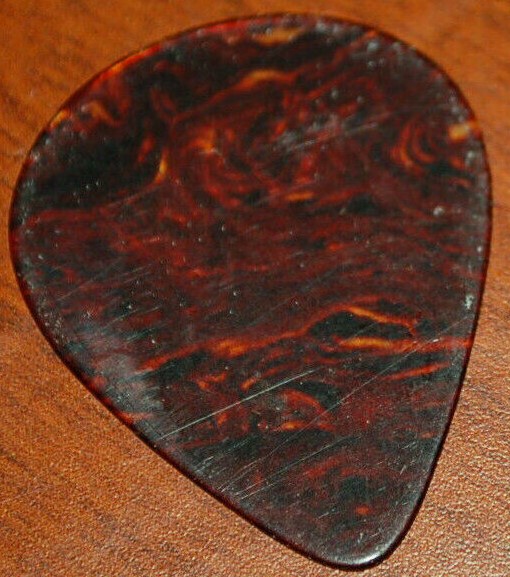 However, tempers began to flare as they were understandably irritable. "Take one" featured a bit of lead guitar from George in the introduction before the vocals came in, at Paul's suggestion. However, the song fell apart during the second verse, Paul's bass playing being hampered by him not having a plectrum (or pick), something he apparently didn't need for the two songs they recorded earlier in the day. “What are you doing?” John says to Paul as he stops the song, “dum, dum, dum, dum” he demonstrates to his bassist as what his playing should sound like. However, tempers began to flare as they were understandably irritable. "Take one" featured a bit of lead guitar from George in the introduction before the vocals came in, at Paul's suggestion. However, the song fell apart during the second verse, Paul's bass playing being hampered by him not having a plectrum (or pick), something he apparently didn't need for the two songs they recorded earlier in the day. “What are you doing?” John says to Paul as he stops the song, “dum, dum, dum, dum” he demonstrates to his bassist as what his playing should sound like.
 With a discernibly irritated vocal from John, "take two" made it all the way through the song, his singing throughout this session pronouncing the word "said" as "shaid" in imitation of Ray Charles and/or Richie Barrett ("Shome other guy now..."). The guitar solo in the song at this point was in the form of a standard 12-bar blues pattern, George's ad lib guitar solo unfortunately featuring a noticeable amount of missed strings and flubbed notes toward the end. “What kind of solo is that?” Paul remarked afterward, the obvious conclusion being that they would need to try again. With a discernibly irritated vocal from John, "take two" made it all the way through the song, his singing throughout this session pronouncing the word "said" as "shaid" in imitation of Ray Charles and/or Richie Barrett ("Shome other guy now..."). The guitar solo in the song at this point was in the form of a standard 12-bar blues pattern, George's ad lib guitar solo unfortunately featuring a noticeable amount of missed strings and flubbed notes toward the end. “What kind of solo is that?” Paul remarked afterward, the obvious conclusion being that they would need to try again.
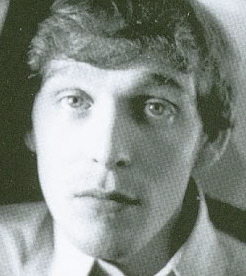 "Take three," with George's lead guitar in the introduction being dropped at this point, made it through most of the bridge before it became apparent that Paul was struggling to play the song without his plectrum. John once again stops the song by saying, “What are you doing?” to which Paul replies, “It's murder, I can't do it, I can't keep it up.” When John asks why he isn't using a plectrum, he exclaims, “I haven't got one!” “But your clothes have been brought hours ago,” John confirms. “I wonder where the cases are,” Paul adds, which prompts road manager Neil Aspinall to chime in with “I said to you before, Paul...I said, 'do you want me to bring your case in,' and you just walked away!” "Take three," with George's lead guitar in the introduction being dropped at this point, made it through most of the bridge before it became apparent that Paul was struggling to play the song without his plectrum. John once again stops the song by saying, “What are you doing?” to which Paul replies, “It's murder, I can't do it, I can't keep it up.” When John asks why he isn't using a plectrum, he exclaims, “I haven't got one!” “But your clothes have been brought hours ago,” John confirms. “I wonder where the cases are,” Paul adds, which prompts road manager Neil Aspinall to chime in with “I said to you before, Paul...I said, 'do you want me to bring your case in,' and you just walked away!”
 Paul carried on without his plectrum for "take four," which made it through most of George's guitar solo, this being performed with more skill this time around. However, John came in with his lead vocals after twelve measures as he had done in "take two" but, this time around, Paul was directing them through a sixteen measure solo section equivalent to the sixteen-measure verses that are heard throughout the song. As the song stops suddently because of this confusion, John says to Paul, “What the hell, I told you,” to which Paul replies, “It's you, it's you!...you came in at the wrong, half way through the solo.” “What was it, a twelve-bar?” John sincerely inquires, to which he is corrected by George Martin. At this point it was decided that the solo section should be sixteen measures in length like the rest of the verses. Paul carried on without his plectrum for "take four," which made it through most of George's guitar solo, this being performed with more skill this time around. However, John came in with his lead vocals after twelve measures as he had done in "take two" but, this time around, Paul was directing them through a sixteen measure solo section equivalent to the sixteen-measure verses that are heard throughout the song. As the song stops suddently because of this confusion, John says to Paul, “What the hell, I told you,” to which Paul replies, “It's you, it's you!...you came in at the wrong, half way through the solo.” “What was it, a twelve-bar?” John sincerely inquires, to which he is corrected by George Martin. At this point it was decided that the solo section should be sixteen measures in length like the rest of the verses.
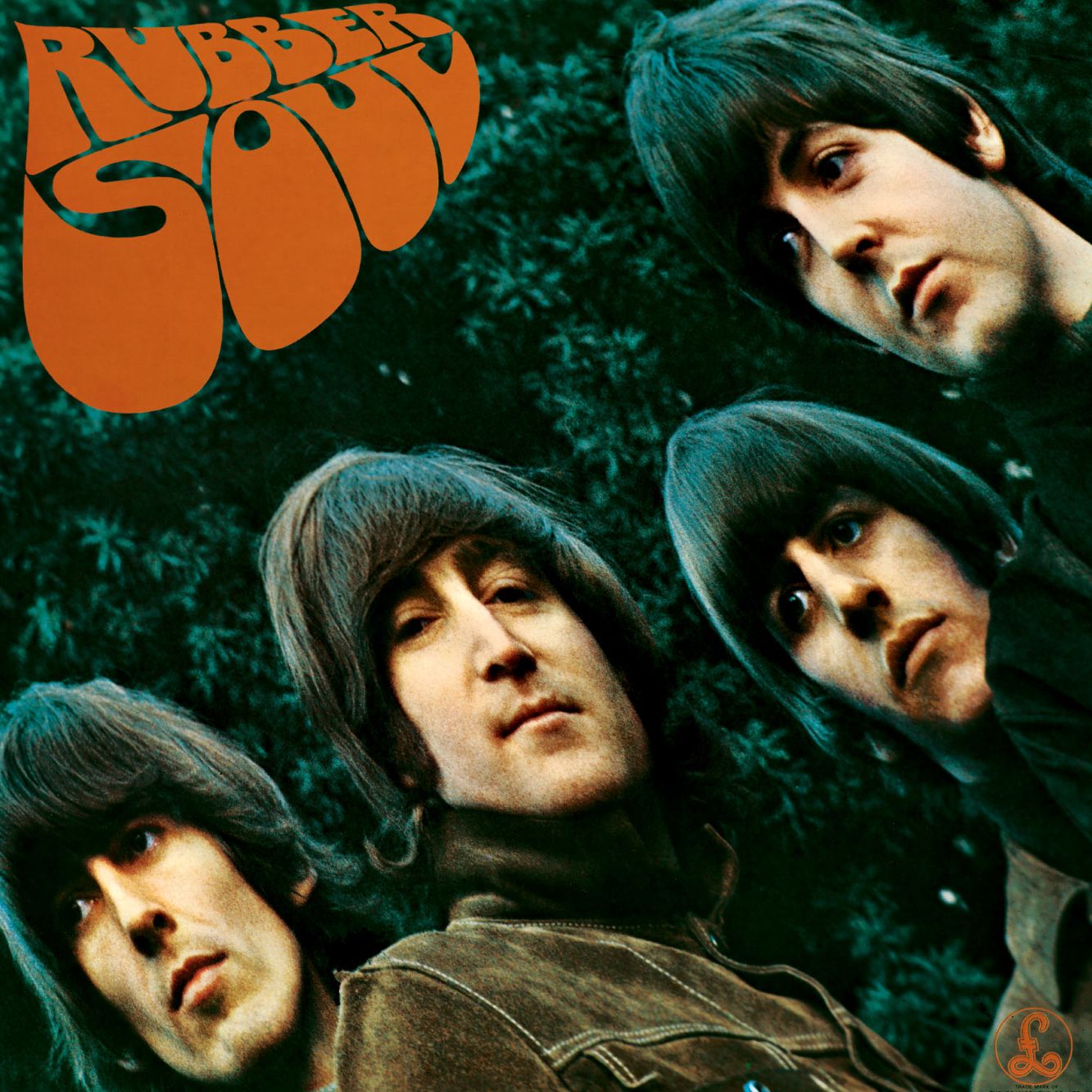 Since the first half of "take four" was performed quite well, a decision was made to start "take five" just before the guitar solo and finish through to the end of the song so that the exhausted Beatles could finally retire for the evening. The intention was for George Martin to edit the first half of "take four" with "take five" during the mixing stage at a later date, something that never materialized due to “From Me To You” and “Thank You Girl” being chosen for their third single after all. As for this recording of “The One After 909,” it was deemed inadequate for any release at all during their career. Interestingly, another early “Lennon / McCartney” composition entitled “What Goes On?” was also considered for this session but, since they struggled with “The One After 909” for so long, the other song had to wait. And wait it did, until November of 1965 for the British “Rubber Soul” album. As for "The One After 909," author Kevin Howlett, as detailed in his "Track By Track" section of the book contained in the 2021 Anniversary edition of the "Let It Be" album, writes that "John revealed at Apple that, in late 1963, he had offered 'The One After 909' to The Rolling Stones, who opted instead to record Lennon / McCartney's 'I Wanna Be Your Man' for their second single." Since the first half of "take four" was performed quite well, a decision was made to start "take five" just before the guitar solo and finish through to the end of the song so that the exhausted Beatles could finally retire for the evening. The intention was for George Martin to edit the first half of "take four" with "take five" during the mixing stage at a later date, something that never materialized due to “From Me To You” and “Thank You Girl” being chosen for their third single after all. As for this recording of “The One After 909,” it was deemed inadequate for any release at all during their career. Interestingly, another early “Lennon / McCartney” composition entitled “What Goes On?” was also considered for this session but, since they struggled with “The One After 909” for so long, the other song had to wait. And wait it did, until November of 1965 for the British “Rubber Soul” album. As for "The One After 909," author Kevin Howlett, as detailed in his "Track By Track" section of the book contained in the 2021 Anniversary edition of the "Let It Be" album, writes that "John revealed at Apple that, in late 1963, he had offered 'The One After 909' to The Rolling Stones, who opted instead to record Lennon / McCartney's 'I Wanna Be Your Man' for their second single."
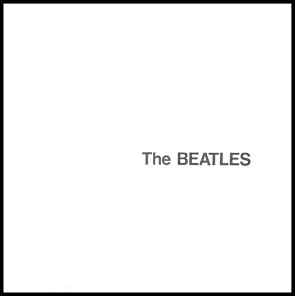 The Beatles, of course, went on to much bigger and better things in the next five years, “One After 909” being pushed so far back in their memories as to be virtually forgotten. Then in January of 1969, when Paul enacted a new filmed rehearsal and live performance project, a new album's worth of material needed to be composed and recorded. They had all just poured their souls out for over five months recording the 30-track “White Album,” this having been released toward the end of November 1968. Nonetheless, they needed to quickly put their noses to the grindstone once again to compose and record another album. The Beatles, of course, went on to much bigger and better things in the next five years, “One After 909” being pushed so far back in their memories as to be virtually forgotten. Then in January of 1969, when Paul enacted a new filmed rehearsal and live performance project, a new album's worth of material needed to be composed and recorded. They had all just poured their souls out for over five months recording the 30-track “White Album,” this having been released toward the end of November 1968. Nonetheless, they needed to quickly put their noses to the grindstone once again to compose and record another album.
 Paul was up to the task at hand, his songwriting skills always being ready for any challenge. George had a good amount of new ideas as well, Ringo even offering up a couple of song ideas. John, however, found himself deeply engrossed in his new relationship with Yoko, not to mention his unfortunate addiction to heroin. He worked up a few song ideas but found himself a bit lacking in inspiration. Because of “lack of material,” as he stated in his 1980 Playboy interview, The Beatles decided to dredge up some early Lennon / McCartney compositions that never saw the light of day on January 3rd, 1969 at Twickenham Film Studios, their second day of rehearsals for the project. As seen on Peter Jackson's "Get Back" film, the group ran through early gems such as "Just Fun," "Because You Know I Love You So" ("don't think that ever got there," Paul stated afterward) and "Won't You Please Say Goodbye." After these, John decided to reacquaint his band-mates with “One After 909.” Paul was up to the task at hand, his songwriting skills always being ready for any challenge. George had a good amount of new ideas as well, Ringo even offering up a couple of song ideas. John, however, found himself deeply engrossed in his new relationship with Yoko, not to mention his unfortunate addiction to heroin. He worked up a few song ideas but found himself a bit lacking in inspiration. Because of “lack of material,” as he stated in his 1980 Playboy interview, The Beatles decided to dredge up some early Lennon / McCartney compositions that never saw the light of day on January 3rd, 1969 at Twickenham Film Studios, their second day of rehearsals for the project. As seen on Peter Jackson's "Get Back" film, the group ran through early gems such as "Just Fun," "Because You Know I Love You So" ("don't think that ever got there," Paul stated afterward) and "Won't You Please Say Goodbye." After these, John decided to reacquaint his band-mates with “One After 909.”
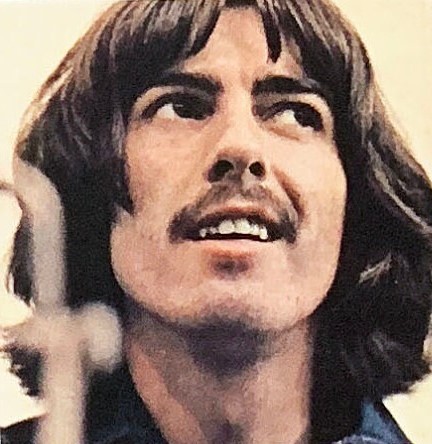 They took to it fondly and, with the cameras rolling, a more rollicking swing beat was incorporated to make it sound more fun. This performance was followed by the dialogue that appears at the beginning of the “Songwriting History” section, which was an encouragement between themselves to include it among the material for this project. With this in mind, they ran through the song a total of three times, George playing his lead guitar through a wah-wah pedal. They took to it fondly and, with the cameras rolling, a more rollicking swing beat was incorporated to make it sound more fun. This performance was followed by the dialogue that appears at the beginning of the “Songwriting History” section, which was an encouragement between themselves to include it among the material for this project. With this in mind, they ran through the song a total of three times, George playing his lead guitar through a wah-wah pedal.
 On the next day of rehearsals, January 6th, 1969, they ran through “One After 909” three more times, the first two being taken at a slower tempo while the third was a more rocking spirited version. On January 7th, 1969, four performances of the song show it becoming the fun rocker that would eventually grace the “Let It Be” album, Paul and Ringo providing a solid backing while George supplied guitar passages that filled the gaps between lyrical phrases. The main focus of their January 8th, 1969 session was working through 41 renditions of George's “I Me Mine,” but this enthusiastic and high spirited rehearsal saw them run through “One After 909” once as well, just to make sure they had the arrangement down reasonably well, which they did. On the next day of rehearsals, January 6th, 1969, they ran through “One After 909” three more times, the first two being taken at a slower tempo while the third was a more rocking spirited version. On January 7th, 1969, four performances of the song show it becoming the fun rocker that would eventually grace the “Let It Be” album, Paul and Ringo providing a solid backing while George supplied guitar passages that filled the gaps between lyrical phrases. The main focus of their January 8th, 1969 session was working through 41 renditions of George's “I Me Mine,” but this enthusiastic and high spirited rehearsal saw them run through “One After 909” once as well, just to make sure they had the arrangement down reasonably well, which they did.
 The next day, January 9th, 1969, witnessed them rehearsing the song four times, George still playing his lead guitar through a wah-wah pedal. Footage from two of these versions was edited together and featured in the “Let It Be” movie, prefaced by Paul explaining how he and John would “sag off every school day” to write songs at his house in the early days, his full quote detailed above under “Songwriting History.” The next day, January 9th, 1969, witnessed them rehearsing the song four times, George still playing his lead guitar through a wah-wah pedal. Footage from two of these versions was edited together and featured in the “Let It Be” movie, prefaced by Paul explaining how he and John would “sag off every school day” to write songs at his house in the early days, his full quote detailed above under “Songwriting History.”
 All of the January rehearsals mentioned above occurred at Twickenham Film Studios but, because of George temporarily quitting The Beatles on January 10th, 1969, one of the conditions of his return was that they discontinue their rehearsals at this location. Instead, they resumed this project's sessions in their new basement studio at Apple Headquarters at 3 Savile Row in London. After a few rehearsals there, they decided that “One After 909” should be gone over again on January 28th in preparation for the concert they were to perform, although they hadn't yet decided where that would be. All of the January rehearsals mentioned above occurred at Twickenham Film Studios but, because of George temporarily quitting The Beatles on January 10th, 1969, one of the conditions of his return was that they discontinue their rehearsals at this location. Instead, they resumed this project's sessions in their new basement studio at Apple Headquarters at 3 Savile Row in London. After a few rehearsals there, they decided that “One After 909” should be gone over again on January 28th in preparation for the concert they were to perform, although they hadn't yet decided where that would be.
 It was apparent that they were truly enjoying themselves on this day, with newly recruited Billy Preston joining in the fun on electric piano. George had decided by this time that he didn't want to use his wah-wah pedal on anything, electing instead to play straight electric guitar while concocting an effective introduction to the song. It was apparent that they were truly enjoying themselves on this day, with newly recruited Billy Preston joining in the fun on electric piano. George had decided by this time that he didn't want to use his wah-wah pedal on anything, electing instead to play straight electric guitar while concocting an effective introduction to the song.
 On one of these versions, Paul encourages his returned lead guitarist with “yeah, rock 'n' roll” during the guitar solo. During the bridge that follows, John decides to sing each line very quickly, Paul repeating each line back to him. However, at the half-way point, John mistakenly begins to sing the verse. When he catches himself, he sings, “Oh, I did it again, oh yeah...railman...Oh God!...wrong location.” On one of these versions, Paul encourages his returned lead guitarist with “yeah, rock 'n' roll” during the guitar solo. During the bridge that follows, John decides to sing each line very quickly, Paul repeating each line back to him. However, at the half-way point, John mistakenly begins to sing the verse. When he catches himself, he sings, “Oh, I did it again, oh yeah...railman...Oh God!...wrong location.”
 It was on the following day, January 29th, 1969, that they decided the Apple Headquarters roof would be the ideal place for their concert, which would be done the following day. They decided to rehearse the five songs they would be performing at this concert, “One After 909” among them. They went over this song three times on this day, the first of which being performed before Billy Preston arrived and with slightly subdued vocals in order to save their voices for the following day. Interestingly, John sang “I begged her not to leave” instead of “go,” something he habitually did throughout this month's rehearsals, Paul repeating “leave” afterward as if to correct either himself or John. It was on the following day, January 29th, 1969, that they decided the Apple Headquarters roof would be the ideal place for their concert, which would be done the following day. They decided to rehearse the five songs they would be performing at this concert, “One After 909” among them. They went over this song three times on this day, the first of which being performed before Billy Preston arrived and with slightly subdued vocals in order to save their voices for the following day. Interestingly, John sang “I begged her not to leave” instead of “go,” something he habitually did throughout this month's rehearsals, Paul repeating “leave” afterward as if to correct either himself or John.
 The second version of the day has John still singing “begged her not to leave,” while humorously singing “oh, hit me now!” as the first bridge goes into the verse that follows. Then, after he sings “one after 909,” he continues with “ten, eleven, twelve,” Paul then introducing the guitar solo with “oh, you're cool,” which is followed by John singing “sheekidy-bah” and “bobidy-boo” during the drum breaks that appear in this instrumental section. John once again mistakenly begins the final verse midway through the second bridge, Paul vocally getting him back on track. The second version of the day has John still singing “begged her not to leave,” while humorously singing “oh, hit me now!” as the first bridge goes into the verse that follows. Then, after he sings “one after 909,” he continues with “ten, eleven, twelve,” Paul then introducing the guitar solo with “oh, you're cool,” which is followed by John singing “sheekidy-bah” and “bobidy-boo” during the drum breaks that appear in this instrumental section. John once again mistakenly begins the final verse midway through the second bridge, Paul vocally getting him back on track.
 After Billy Preston arrived, they went through “One After 909” one last time, this being the final rehearsal before the next day's live rooftop performance of the song. George Martin suggested, "Do it once with Billy playing the ordinary piano," which they then proceeded to do. John once again sings “begged her not to leave,” while Paul sings the complete first bridge with John as if to make sure he doesn't inadvertently move too quickly into the next verse as he had been doing. During the solo, Paul recites the lyrics of the first verse, apparently just to humor himself. All the while, George experiments with playing his guitar through a Leslie speaker, an effect that wasn't practical for the rooftop performance because of having to lug this big piece of equipment to the roof. Something else that was not practical for the rooftop was a grand piano, so Billy Preston was relegated to using a Fender Rhodes electric piano instead. The excellent final rendition of "One After 909" from this day can be heard on various 2021 Anniversary editions of the "Let It Be" album. After Billy Preston arrived, they went through “One After 909” one last time, this being the final rehearsal before the next day's live rooftop performance of the song. George Martin suggested, "Do it once with Billy playing the ordinary piano," which they then proceeded to do. John once again sings “begged her not to leave,” while Paul sings the complete first bridge with John as if to make sure he doesn't inadvertently move too quickly into the next verse as he had been doing. During the solo, Paul recites the lyrics of the first verse, apparently just to humor himself. All the while, George experiments with playing his guitar through a Leslie speaker, an effect that wasn't practical for the rooftop performance because of having to lug this big piece of equipment to the roof. Something else that was not practical for the rooftop was a grand piano, so Billy Preston was relegated to using a Fender Rhodes electric piano instead. The excellent final rendition of "One After 909" from this day can be heard on various 2021 Anniversary editions of the "Let It Be" album.
 Next came that fateful day, January 30th, 1969, when The Beatles and Billy Preston played atop their Apple offices to whoever happened to gather below in the street. Of course, it was filmed and professionally recorded to preserve the event for posterity. While three of the five songs they performed that day were repeated, after a brief partial run-through of “One After 909” they only needed to play one full version of the song to nail it successfully. This, therefore, became the 'take' that was featured on the resulting “Let It Be” album. Next came that fateful day, January 30th, 1969, when The Beatles and Billy Preston played atop their Apple offices to whoever happened to gather below in the street. Of course, it was filmed and professionally recorded to preserve the event for posterity. While three of the five songs they performed that day were repeated, after a brief partial run-through of “One After 909” they only needed to play one full version of the song to nail it successfully. This, therefore, became the 'take' that was featured on the resulting “Let It Be” album.
 The performance was virtually flawless, John recalling his lyrics properly and not coming in early after the bridges as he had been prone to do in rehearsals. George's impromptu lead guitar work came across appropriately as well without any botching or sour notes. After the song concludes, in the knowledge that they pulled it off without a hitch, John celebrates the event by singing “Oh, Danny Boy / the old Savannah calling,” Paul quietly joining in as well. While the correct lyrics to the classic Irish folk song “Danny Boy” are “Oh, Danny boy / the pipes, the pipes are calling,” John is known to purposely mess around with lyrics of songs during rehearsals and recording sessions. The performance was virtually flawless, John recalling his lyrics properly and not coming in early after the bridges as he had been prone to do in rehearsals. George's impromptu lead guitar work came across appropriately as well without any botching or sour notes. After the song concludes, in the knowledge that they pulled it off without a hitch, John celebrates the event by singing “Oh, Danny Boy / the old Savannah calling,” Paul quietly joining in as well. While the correct lyrics to the classic Irish folk song “Danny Boy” are “Oh, Danny boy / the pipes, the pipes are calling,” John is known to purposely mess around with lyrics of songs during rehearsals and recording sessions.
 Upon leaving the roof on this day, The Beatles filed into the basement control room to listen to the recordings made moments before while 'joss-sticks' were burning for atmosphere. As witnessed in Peter Jackson's "Get Back" series, they all heard this spirited recording of "One After 909" played back to them, Linda Eastman, Yoko and Maureen Starkey enjoying the performance as well. "This could be a very good dry run for something else too," George Martin suggested. "Yeah, for taking over London," George Harrison replied, followed by John stating: "Top of the Hilton tomorrow!" Upon leaving the roof on this day, The Beatles filed into the basement control room to listen to the recordings made moments before while 'joss-sticks' were burning for atmosphere. As witnessed in Peter Jackson's "Get Back" series, they all heard this spirited recording of "One After 909" played back to them, Linda Eastman, Yoko and Maureen Starkey enjoying the performance as well. "This could be a very good dry run for something else too," George Martin suggested. "Yeah, for taking over London," George Harrison replied, followed by John stating: "Top of the Hilton tomorrow!"
 With the prospect of an immediately releasable live Beatles performance at hand, Glyn Johns and engineer Alan Parsons (and possibly George Martin) met in the control room of Apple Studios on February 5th, 1969 to create stereo mixes of the five songs recorded on the roof on January 30th, 1969. The format of how this was to be released to the public hadn't been formalized yet, but when it was, these mixes would prove themselves to be ready. To preserve the “as nature intended” format The Beatles wanted for the entire project, a few seconds of extraneous rooftop sounds were preserved at the beginning of this mix, including a piano chord from Billy Preston, some stray guitar notes from George, a member of the film crew shouting “All cameras four!” (indicating "take 4"), the sound of the clapperboard, and John's count-in for the song. After the song concludes, this stereo mix also included John and Paul's spontaneous “Danny Boy” vocals as detailed above. With the prospect of an immediately releasable live Beatles performance at hand, Glyn Johns and engineer Alan Parsons (and possibly George Martin) met in the control room of Apple Studios on February 5th, 1969 to create stereo mixes of the five songs recorded on the roof on January 30th, 1969. The format of how this was to be released to the public hadn't been formalized yet, but when it was, these mixes would prove themselves to be ready. To preserve the “as nature intended” format The Beatles wanted for the entire project, a few seconds of extraneous rooftop sounds were preserved at the beginning of this mix, including a piano chord from Billy Preston, some stray guitar notes from George, a member of the film crew shouting “All cameras four!” (indicating "take 4"), the sound of the clapperboard, and John's count-in for the song. After the song concludes, this stereo mix also included John and Paul's spontaneous “Danny Boy” vocals as detailed above.
 Once Glyn Johns was dispatched in March 1969 to assemble a “Get Back” album, the above-mentioned stereo mix of “One After 909” was included therein. When he and George Martin met with engineer Steve Vaughan in Studio one of Olympic Sound Studios on May 28th, 1969 (with George Harrison possibly in attendance as well) to create the master tape banding and compilation of this proposed “Get Back” album, “The One After 909” (as it was titled on the tape box) was featured as the opening song of side one. Once Glyn Johns was dispatched in March 1969 to assemble a “Get Back” album, the above-mentioned stereo mix of “One After 909” was included therein. When he and George Martin met with engineer Steve Vaughan in Studio one of Olympic Sound Studios on May 28th, 1969 (with George Harrison possibly in attendance as well) to create the master tape banding and compilation of this proposed “Get Back” album, “The One After 909” (as it was titled on the tape box) was featured as the opening song of side one.
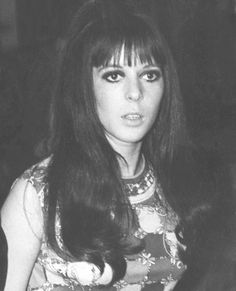 After the “Danny Boy” vocalizations that conclude this mix, we hear a bit of Beatles rooftop chatter that was prepared at Olympic Sound Studios as an insert on either May 7th or 9th, 1969, by the same engineering team. At the very conclusion of the 42-minute rooftop performance, Paul states, “Thanks, Mo” in response to Ringo's wife Maureen Starkey clapping and cheering the loudest. After this, John concludes the day's events by saying, “I'd like to say 'thank you' on behalf of the group and ourselves. I hope we passed the audition!” Therefore, while Beatles fans have gotten used to this dialog being heard after the song “Get Back” at the conclusion of the “Let It Be” soundtrack album, it was originally inserted to be heard after the opening song on the proposed “Get Back” album, this being “One After 909.” After the “Danny Boy” vocalizations that conclude this mix, we hear a bit of Beatles rooftop chatter that was prepared at Olympic Sound Studios as an insert on either May 7th or 9th, 1969, by the same engineering team. At the very conclusion of the 42-minute rooftop performance, Paul states, “Thanks, Mo” in response to Ringo's wife Maureen Starkey clapping and cheering the loudest. After this, John concludes the day's events by saying, “I'd like to say 'thank you' on behalf of the group and ourselves. I hope we passed the audition!” Therefore, while Beatles fans have gotten used to this dialog being heard after the song “Get Back” at the conclusion of the “Let It Be” soundtrack album, it was originally inserted to be heard after the opening song on the proposed “Get Back” album, this being “One After 909.”
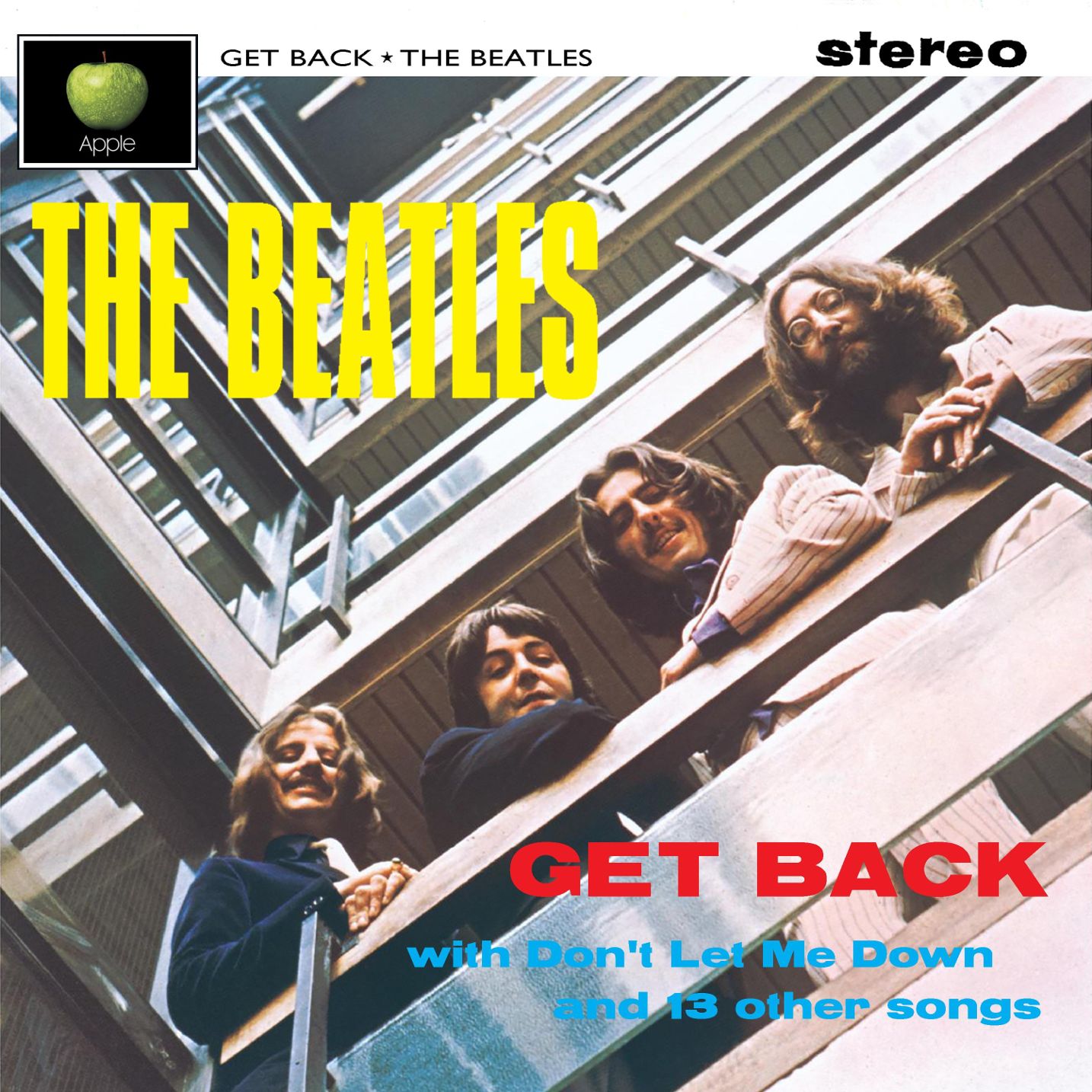 The “Get Back” album, as history bears out, didn't get released in the summer of 1969 as intended. When a second “Get Back” album was banded and compiled by Glyn Johns at Olympic Sound Studios on January 5th, 1970, this same stereo mix of “The One After 909” was once again featured as the opening track of the album. This album was squashed as well, John in particular objecting to Glyn Johns wanting a producer's credit for the album. The “Get Back” album, as history bears out, didn't get released in the summer of 1969 as intended. When a second “Get Back” album was banded and compiled by Glyn Johns at Olympic Sound Studios on January 5th, 1970, this same stereo mix of “The One After 909” was once again featured as the opening track of the album. This album was squashed as well, John in particular objecting to Glyn Johns wanting a producer's credit for the album.
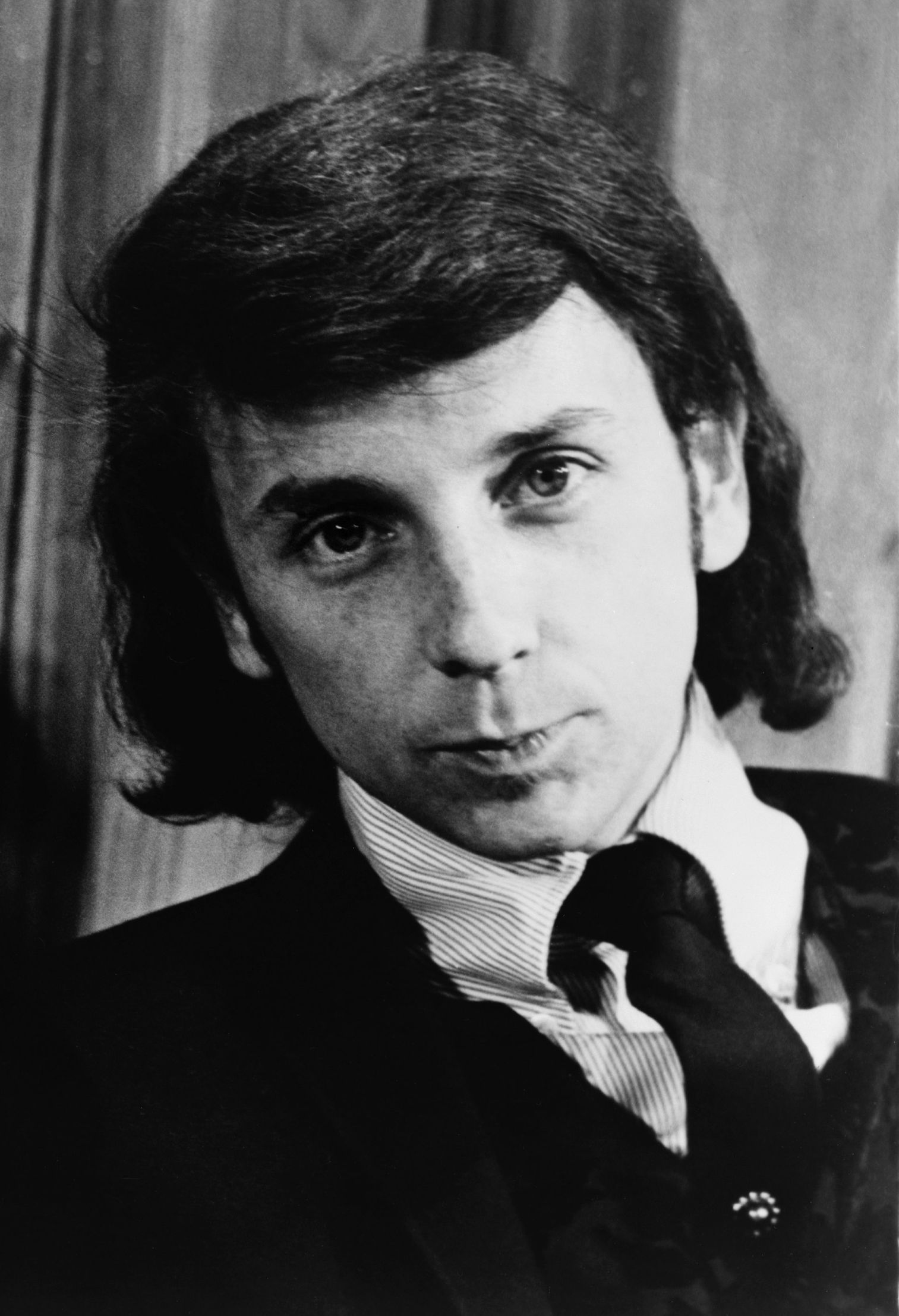 Legendary producer Phil Spector was then brought in to salvage what was now referred to as the “Let It Be” album. On March 23rd, 1970, his first day working on the project, Phil Spector created three new stereo mixes of the rooftop performance of “One After 909” in Room 4 of EMI Studios with engineers Peter Bown and Roger Ferris. The third stereo mix was deemed worthy of inclusion on the resulting soundtrack album, this being a straightforward and excellent live performance. Omitting the opening extraneous sounds of Glyn John's mix, he made sure Billy Preston's keyboard performance was heard adequately. Phil Spector did decide to include the “Danny Boy” vocalizations at the song's conclusion, wanting to preserve a degree of the spontaneous element of the sessions as Glyn Johns had done. Legendary producer Phil Spector was then brought in to salvage what was now referred to as the “Let It Be” album. On March 23rd, 1970, his first day working on the project, Phil Spector created three new stereo mixes of the rooftop performance of “One After 909” in Room 4 of EMI Studios with engineers Peter Bown and Roger Ferris. The third stereo mix was deemed worthy of inclusion on the resulting soundtrack album, this being a straightforward and excellent live performance. Omitting the opening extraneous sounds of Glyn John's mix, he made sure Billy Preston's keyboard performance was heard adequately. Phil Spector did decide to include the “Danny Boy” vocalizations at the song's conclusion, wanting to preserve a degree of the spontaneous element of the sessions as Glyn Johns had done.
 Sometime in 1995, George Martin and Geoff Emerick returned to the March 5th, 1963 session tapes at Abbey Road Studios to get a bird's eye view of the original stressful “One After 909” recording session for inclusion on the “Anthology 1” album. They first faded in the aborted "take three," which ends with John's dissatisfaction with Paul's bass playing, resulting in the above-detailed dialog between John, Paul and assistant Neil Aspinall. "Take four" is then faded up midway through to reveal John mistakenly coming in too early on vocals during George's guitar solo, this resulting in some mild bickering between the vocalists. This is immediately followed by the beginning of "take five," which in itself was intended as an edit piece of the song that began with George's solo, this mix being faded down directly after the solo began. George Martin and Geoff Emerick then performed the edit of "take four" and "take five" as originally intended but not followed through with back in 1963. Sometime in 1995, George Martin and Geoff Emerick returned to the March 5th, 1963 session tapes at Abbey Road Studios to get a bird's eye view of the original stressful “One After 909” recording session for inclusion on the “Anthology 1” album. They first faded in the aborted "take three," which ends with John's dissatisfaction with Paul's bass playing, resulting in the above-detailed dialog between John, Paul and assistant Neil Aspinall. "Take four" is then faded up midway through to reveal John mistakenly coming in too early on vocals during George's guitar solo, this resulting in some mild bickering between the vocalists. This is immediately followed by the beginning of "take five," which in itself was intended as an edit piece of the song that began with George's solo, this mix being faded down directly after the solo began. George Martin and Geoff Emerick then performed the edit of "take four" and "take five" as originally intended but not followed through with back in 1963.
 Then sometime in 2003, the engineering team of Paul Hicks, Guy Massey and Allan Rouse convened at Abbey Road Studios to create a vibrant new stereo mix of the January 30th, 1969 rooftop performance of “One After 909” for inclusion on the album “Let It Be...Naked.” One noticeable difference in this mix, other than the omission of the “Danny Boy” conclusion, was Paul's exclamation “Yes I did!” after the line “begged her on my bended knee,” this being barely discernible in any other mixes up to this point. This engineering team also included a bit of the conclusion of “One After 909” as rehearsed at Twickenham Film Studios on January 3rd, 1969 for their “Fly On The Wall” bonus disc that came with the “Let It Be...Naked” album. This was followed by the band's discussion (detailed above in the “Songwriting History” section) about whether they should include the song in the “Let It Be” project. Then sometime in 2003, the engineering team of Paul Hicks, Guy Massey and Allan Rouse convened at Abbey Road Studios to create a vibrant new stereo mix of the January 30th, 1969 rooftop performance of “One After 909” for inclusion on the album “Let It Be...Naked.” One noticeable difference in this mix, other than the omission of the “Danny Boy” conclusion, was Paul's exclamation “Yes I did!” after the line “begged her on my bended knee,” this being barely discernible in any other mixes up to this point. This engineering team also included a bit of the conclusion of “One After 909” as rehearsed at Twickenham Film Studios on January 3rd, 1969 for their “Fly On The Wall” bonus disc that came with the “Let It Be...Naked” album. This was followed by the band's discussion (detailed above in the “Songwriting History” section) about whether they should include the song in the “Let It Be” project.
 Sometime in 2021, Giles Martin and engineer Sam Okell returned to the master tapes of "One After 909" to create a new mix for inclusion on an Anniversary version of the "Let It Be" album available in various editions. They also created an additional stereo mix of the song, this version being recorded on January 29th, 1969 at Apple Studios with Billy Preston on acoustic piano, per George Martin's suggestion. The January 30th, 1969 rooftop performance with a bit more extraneous sounds and chatter as originally included on the proposed Glyn Johns "Get Back" album from 1969 was also remastered at this time. Sometime in 2021, Giles Martin and engineer Sam Okell returned to the master tapes of "One After 909" to create a new mix for inclusion on an Anniversary version of the "Let It Be" album available in various editions. They also created an additional stereo mix of the song, this version being recorded on January 29th, 1969 at Apple Studios with Billy Preston on acoustic piano, per George Martin's suggestion. The January 30th, 1969 rooftop performance with a bit more extraneous sounds and chatter as originally included on the proposed Glyn Johns "Get Back" album from 1969 was also remastered at this time.
Song Structure and Style
This being the first known John Lennon composition, it follows a standard structure as found in popular skiffle and early rock-and-roll songs of 1957, something the composer subconsciously picked up on. The structure of “One After 909” consists of 'verse/ verse/ bridge/ verse/ verse (instrumental)/ bridge/ verse' (or aabaaba). This format continued to be used and developed throughout the band's career.
 George's introductory guitar phrase is the first element to be heard, this actually appearing in an anticipatory measure during John's count off to the song. A six-measure introduction is then played by all five musicians, John's rhythm guitar, Paul's bass, Ringo's plodding 4/4 swing-style beat on open hi-hat and Billy Preston's lead electric piano work being added to George's introductory guitar phrase, which he plays three more times to fill out the song's intro. George's introductory guitar phrase is the first element to be heard, this actually appearing in an anticipatory measure during John's count off to the song. A six-measure introduction is then played by all five musicians, John's rhythm guitar, Paul's bass, Ringo's plodding 4/4 swing-style beat on open hi-hat and Billy Preston's lead electric piano work being added to George's introductory guitar phrase, which he plays three more times to fill out the song's intro.
 The first sixteen-measure verse then begins, all instrumentation continuing throughout as in the introduction. John and Paul harmonize their way through the entire verse, John taking his most common Beatles role as lead vocalist while Paul provides the higher harmony. Billy Preston plays lead lines on electric piano to fill the gaps between vocal lines, George relaxing into a rhythm guitar mode until measures 15 and 16 where he delivers a fragrant lead guitar passage. In measures nine and ten, the flow of the swing-style beat is interrupted to accommodate the “move over once / move over twice” lyrics. Everyone performs two standard “Beatles breaks,” each on the downbeat of these measures, the tenth measure ending with a suitable piano glissando from Billy. Ringo performs a snare drum flam in both the ninth and tenth measures during these breaks as an effective tool to accentuate the rhythm. The first sixteen-measure verse then begins, all instrumentation continuing throughout as in the introduction. John and Paul harmonize their way through the entire verse, John taking his most common Beatles role as lead vocalist while Paul provides the higher harmony. Billy Preston plays lead lines on electric piano to fill the gaps between vocal lines, George relaxing into a rhythm guitar mode until measures 15 and 16 where he delivers a fragrant lead guitar passage. In measures nine and ten, the flow of the swing-style beat is interrupted to accommodate the “move over once / move over twice” lyrics. Everyone performs two standard “Beatles breaks,” each on the downbeat of these measures, the tenth measure ending with a suitable piano glissando from Billy. Ringo performs a snare drum flam in both the ninth and tenth measures during these breaks as an effective tool to accentuate the rhythm.
 The second verse is nearly identical to the first but with different lyrics in the first eight measures. George takes on more of a lead guitarist role this time around, playing lead lines to fill in the gaps throughout. A sixteen-measure bridge then appears, the same instrumentation continuing as usual. John sings solo lead vocals here as George plays subtle lead guitar fills in the gaps of the lyrics as he is prone to do throughout his entire Beatles career. Ringo deviates subtly with snare and hi-hat accents in the fifteenth and sixteenth measures to act as a segue into the next verse while Paul finally joins in on harmonies in the final measure on the word “Well...” The second verse is nearly identical to the first but with different lyrics in the first eight measures. George takes on more of a lead guitarist role this time around, playing lead lines to fill in the gaps throughout. A sixteen-measure bridge then appears, the same instrumentation continuing as usual. John sings solo lead vocals here as George plays subtle lead guitar fills in the gaps of the lyrics as he is prone to do throughout his entire Beatles career. Ringo deviates subtly with snare and hi-hat accents in the fifteenth and sixteenth measures to act as a segue into the next verse while Paul finally joins in on harmonies in the final measure on the word “Well...”
 A complete repeat of the first verse is then heard as the third verse, lyrics and all. George is much more adventurous on lead guitar this time around, filling in the vocal gaps with much more enthusiasm in order to accentuate Billy Preston who is doing the same. John's encouraging exclamation “Yeah!” in the sixteenth measure spurs George on to greatness in the solo that follows, while Ringo plays three snare drum triplets as a fill to usher in the solo verse. A complete repeat of the first verse is then heard as the third verse, lyrics and all. George is much more adventurous on lead guitar this time around, filling in the vocal gaps with much more enthusiasm in order to accentuate Billy Preston who is doing the same. John's encouraging exclamation “Yeah!” in the sixteenth measure spurs George on to greatness in the solo that follows, while Ringo plays three snare drum triplets as a fill to usher in the solo verse.
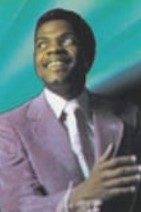 A sixteen-measure instrumental verse then follows, George obviously being the primary focus. The lead guitarist flourishes with an equal exuberance as he had done during his formitave years at the Cavern and in Hamburg, with the worldly experience of Eric Clapton thrown in. Billy Preston can't help but add in some lead piano chops as well, Paul accentuating the excitement with an excited “Whooooa-hoooh” after the second “Beatles break” in the tenth measure to show his approval. A sixteen-measure instrumental verse then follows, George obviously being the primary focus. The lead guitarist flourishes with an equal exuberance as he had done during his formitave years at the Cavern and in Hamburg, with the worldly experience of Eric Clapton thrown in. Billy Preston can't help but add in some lead piano chops as well, Paul accentuating the excitement with an excited “Whooooa-hoooh” after the second “Beatles break” in the tenth measure to show his approval.
 A repeat of the bridge appears next, which is a virtual repeat of the first bridge but with Paul's periodic vocal interjections, undoubtedly spurred on by George's excellently performed guitar solo. Next comes another repeat of the first verse, George scaling down his lead guitar work somewhat which allows Billy Preston's piano work to shine a little more. This final verse is 20 measures in length this time, due to their repeating the final vocal line “said she's travelling on the one after 90...” three times to conclude the song in a stereotypical 50's fashion, not unlike “Roll Over Beethoven.” After Ringo's final cymbal crash, John leads Paul through an ad-lib “Danny Boy” recitation, as described above. A repeat of the bridge appears next, which is a virtual repeat of the first bridge but with Paul's periodic vocal interjections, undoubtedly spurred on by George's excellently performed guitar solo. Next comes another repeat of the first verse, George scaling down his lead guitar work somewhat which allows Billy Preston's piano work to shine a little more. This final verse is 20 measures in length this time, due to their repeating the final vocal line “said she's travelling on the one after 90...” three times to conclude the song in a stereotypical 50's fashion, not unlike “Roll Over Beethoven.” After Ringo's final cymbal crash, John leads Paul through an ad-lib “Danny Boy” recitation, as described above.
American Releases
 “One After 909” was first released in the US on the “Let It Be” soundtrack album on May 18th, 1970. It was distributed in a gate-fold jacket in America, as opposed to the box set with photo book that was released in the UK. It spent four weeks in the top spot of the Billboard album chart and has sold well over four million copies in America alone. “One After 909” was first released in the US on the “Let It Be” soundtrack album on May 18th, 1970. It was distributed in a gate-fold jacket in America, as opposed to the box set with photo book that was released in the UK. It spent four weeks in the top spot of the Billboard album chart and has sold well over four million copies in America alone.
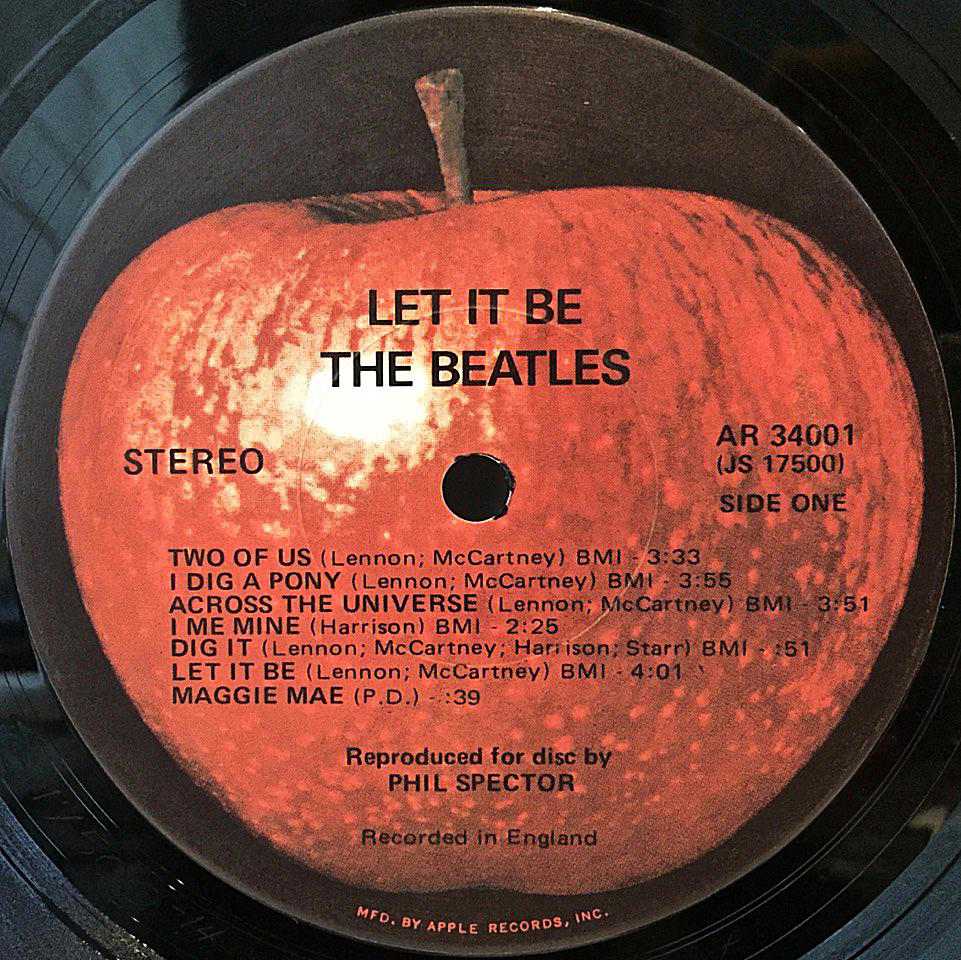 Despite having a red Apple Records label, the “Let It Be” album was distributed by United Artists Records upon initial release and was eventually dropped from their roster a few years later. While Capitol kept all other US Beatles albums in print throughout the '70s, “Let It Be” was the only LP from the group that wasn't legitimately available for a number of years. This was rectified in 1978, however, when Capitol purchased the UA catalog and re-released the album once again, this time in a standard non-gate-fold cover. The album first appeared on compact disc on October 10th, 1987, and then as a remastered CD on September 9th, 2009. A newly mixed vinyl and CD edition of the album was then released on October 15th, 2021, as well as a special edition picture disc. Despite having a red Apple Records label, the “Let It Be” album was distributed by United Artists Records upon initial release and was eventually dropped from their roster a few years later. While Capitol kept all other US Beatles albums in print throughout the '70s, “Let It Be” was the only LP from the group that wasn't legitimately available for a number of years. This was rectified in 1978, however, when Capitol purchased the UA catalog and re-released the album once again, this time in a standard non-gate-fold cover. The album first appeared on compact disc on October 10th, 1987, and then as a remastered CD on September 9th, 2009. A newly mixed vinyl and CD edition of the album was then released on October 15th, 2021, as well as a special edition picture disc.
 In November of 1986, the “Let It Be” soundtrack album was also made available as an “Original Master Recording” release by Mobile Fidelity Sound Lab. Their practice was to prepare a new master utilizing half-speed mastering technology from the original master tapes, in this case using what was referred to therein as a “corrected copy tape.” The album was issued in both a single sleeve and gatefold cover, the single sleeve cover being the rarest. In November of 1986, the “Let It Be” soundtrack album was also made available as an “Original Master Recording” release by Mobile Fidelity Sound Lab. Their practice was to prepare a new master utilizing half-speed mastering technology from the original master tapes, in this case using what was referred to therein as a “corrected copy tape.” The album was issued in both a single sleeve and gatefold cover, the single sleeve cover being the rarest.
 On November 21st, 1995, the highly anticipated compilation set “Anthology 1” hit the stores, the March 5th, 1963 attempts of The Beatles to record “One After 909” being included therein. As detailed above, sections of "take three," "take four" and "take five" from that day are included here, as well as a complete version of the song created by editing together "take four" and "take five." The edited complete version of the song was also featured on the "Anthology 1 Sampler," which was distributed in promotion of the compilation set. On November 21st, 1995, the highly anticipated compilation set “Anthology 1” hit the stores, the March 5th, 1963 attempts of The Beatles to record “One After 909” being included therein. As detailed above, sections of "take three," "take four" and "take five" from that day are included here, as well as a complete version of the song created by editing together "take four" and "take five." The edited complete version of the song was also featured on the "Anthology 1 Sampler," which was distributed in promotion of the compilation set.
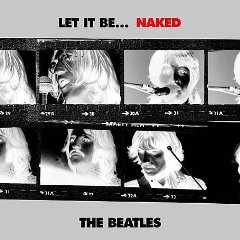 November 17th, 2003 was the release date for “Let It Be...Naked,” an album, a project that was proposed by Paul McCartney to strip away all overdubs and present the material as they originally intended. A vibrant new stereo mix of the rooftop performance of “One After 909” is featured here. This album included a bonus disc entitled "Fly On The Wall," a bit of an early rehearsal of "One After 909" from January 3rd, 1969 at Twickenham Film Studios being included therein, along with some Beatles chatter about the lyrics of the song. November 17th, 2003 was the release date for “Let It Be...Naked,” an album, a project that was proposed by Paul McCartney to strip away all overdubs and present the material as they originally intended. A vibrant new stereo mix of the rooftop performance of “One After 909” is featured here. This album included a bonus disc entitled "Fly On The Wall," a bit of an early rehearsal of "One After 909" from January 3rd, 1969 at Twickenham Film Studios being included therein, along with some Beatles chatter about the lyrics of the song.
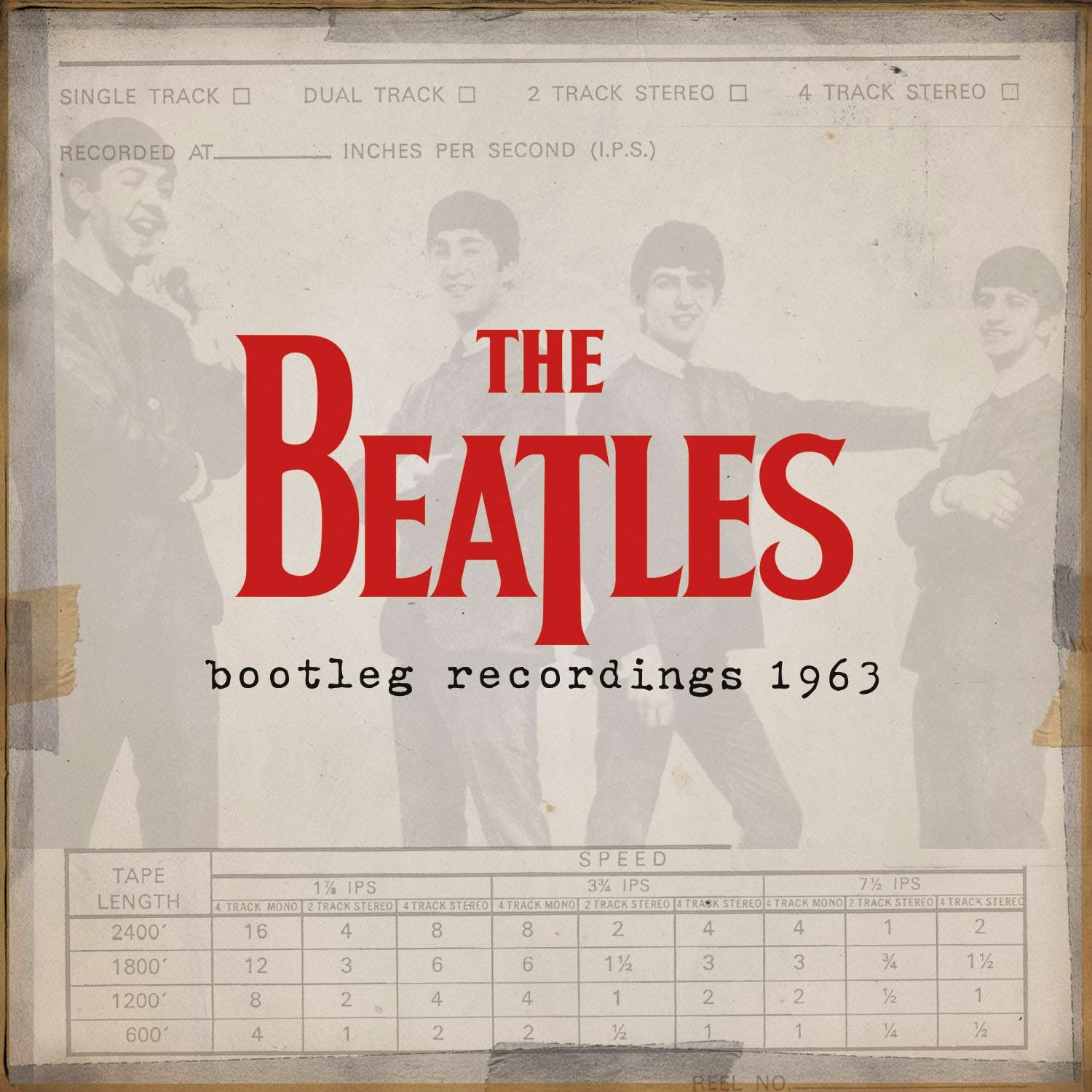 On December 17th, 2013, iTunes released a 59 track compilation album entitled "Bootleg Recordings 1963" only available on their downloading platform, "take one" and "take two" of "One After 909" from the group's March 5th, 1963 EMI recording session included therein. The purpose of this release was to extend the copyright of these recordings under European Union law from 50 years (which would have expired at the end of 2013) to 70 years (until 2033), this being considered an official release. This compilation album was only available in the US on that date to those in the know for a number of hours for $39.99 in its entirety or to be purchased as individual tracks, but was later made available for general purchase as well. On December 17th, 2013, iTunes released a 59 track compilation album entitled "Bootleg Recordings 1963" only available on their downloading platform, "take one" and "take two" of "One After 909" from the group's March 5th, 1963 EMI recording session included therein. The purpose of this release was to extend the copyright of these recordings under European Union law from 50 years (which would have expired at the end of 2013) to 70 years (until 2033), this being considered an official release. This compilation album was only available in the US on that date to those in the know for a number of hours for $39.99 in its entirety or to be purchased as individual tracks, but was later made available for general purchase as well.
 On October 15th, 2021, various editions of the "Let It Be" album were released that feature interesting versions of "One After 909." The "Deluxe" 2CD set features the newly remixed Giles Martin version of the song as well as "take three" as recorded on January 29th, 1969 with Billy Preston on acoustic piano, while both the "Super Deluxe" 5CD + Blu-ray edition and the "Super Deluxe" 4LP + 1 12" EP edition also contain the January 30th, 1969 rooftop performance of "One After 909" as it appeared on Glyn Johns' aborted 1969 "Get Back" album. On October 15th, 2021, various editions of the "Let It Be" album were released that feature interesting versions of "One After 909." The "Deluxe" 2CD set features the newly remixed Giles Martin version of the song as well as "take three" as recorded on January 29th, 1969 with Billy Preston on acoustic piano, while both the "Super Deluxe" 5CD + Blu-ray edition and the "Super Deluxe" 4LP + 1 12" EP edition also contain the January 30th, 1969 rooftop performance of "One After 909" as it appeared on Glyn Johns' aborted 1969 "Get Back" album.
Live Performances
In March of 1957, John Lennon formed a skiffle group with some of his acquaintances from Quarry Bank High School, naming them “The Quarry Men” after the lyric “Quarry Men, strong before our birth” that appeared in their school song. While performances that year consisted mostly of friends' parties, skiffle contests and summer fetes, John's newly written song “The One After 909” became part of their repertoire.
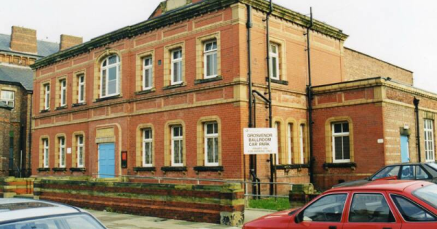 After Paul had joined the group later in 1957, and then George in 1958, their sparse engagements throughout 1959 also included “The One After 909” at times. Their gigs increased in 1960, including multiple appearances at the Grosvenor Ballroom in Wallasey, The Jacaranda and Casbah Coffee Bar in Liverpool, and their first residency in Hamburg, Germany. While they recognized that the patrons at these places reacted best to covers of popular songs, they did include originals sparingly, “The One After 909” being played occasionally. After Paul had joined the group later in 1957, and then George in 1958, their sparse engagements throughout 1959 also included “The One After 909” at times. Their gigs increased in 1960, including multiple appearances at the Grosvenor Ballroom in Wallasey, The Jacaranda and Casbah Coffee Bar in Liverpool, and their first residency in Hamburg, Germany. While they recognized that the patrons at these places reacted best to covers of popular songs, they did include originals sparingly, “The One After 909” being played occasionally.
 There is evidence in Mark Lewisohn's book “Tune In” that The Beatles, as they were finally called, did perform the song during their 1961 and 1962 residencies in Hamburg. Their newly-acquired German acquaintance Astrid Kirchherr is reported have gone on record to identify “The One After 909” as her favorite Beatles original composition, which she had to have heard them perform at the various clubs they played during these years. It is also probable that they played the song periodically at their extensive bookings elsewhere throughout these years, not to mention at their Cavern Club mid-afternoon rehearsal on September 3rd, 1962, in preparation for their EMI recording session the following day. There is evidence in Mark Lewisohn's book “Tune In” that The Beatles, as they were finally called, did perform the song during their 1961 and 1962 residencies in Hamburg. Their newly-acquired German acquaintance Astrid Kirchherr is reported have gone on record to identify “The One After 909” as her favorite Beatles original composition, which she had to have heard them perform at the various clubs they played during these years. It is also probable that they played the song periodically at their extensive bookings elsewhere throughout these years, not to mention at their Cavern Club mid-afternoon rehearsal on September 3rd, 1962, in preparation for their EMI recording session the following day.
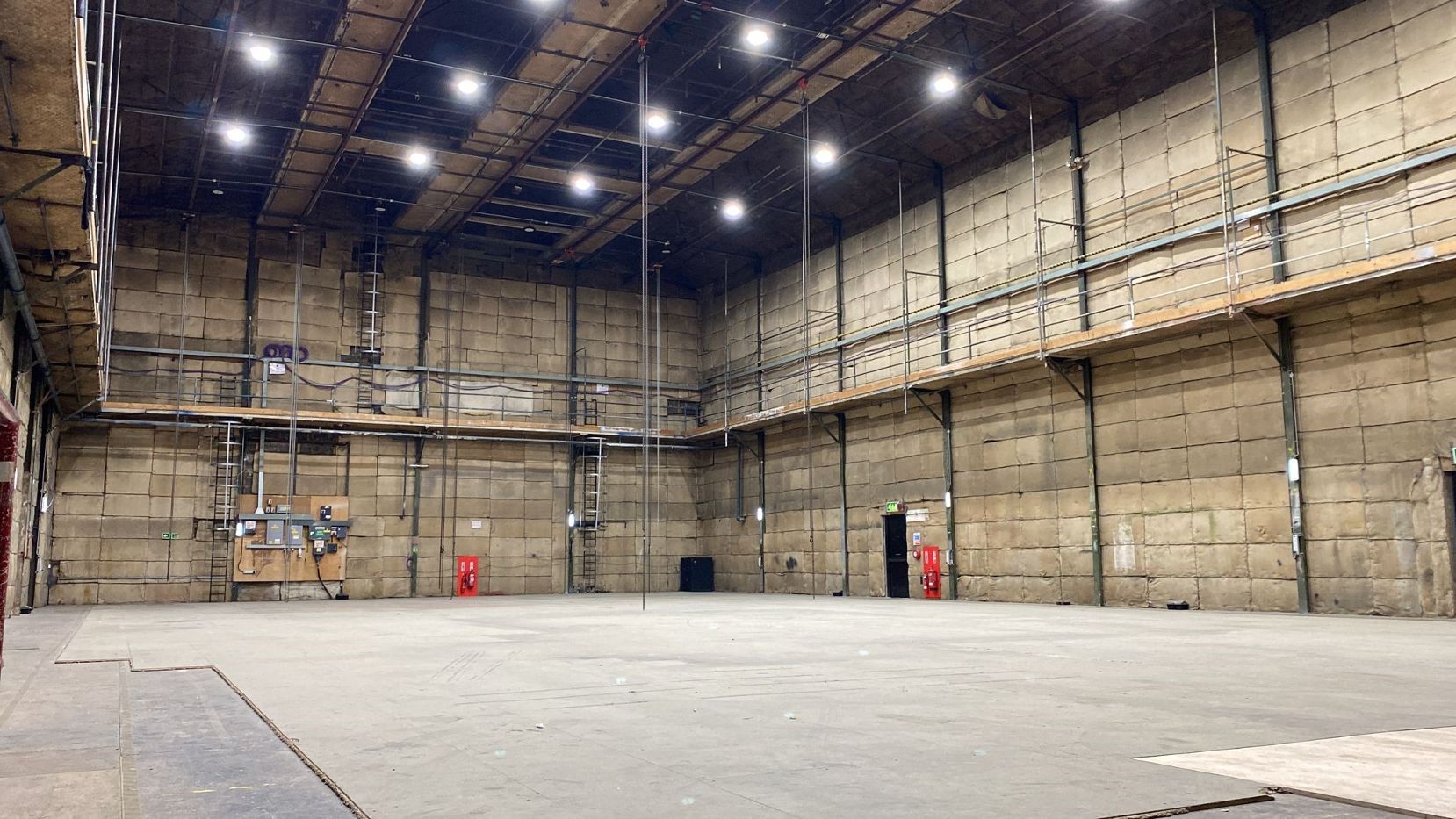 Next we jump to January 1969, where The Beatles reacquaint themselves with the song for inclusion in the “Let It Be” project, footage of their Twickenham Film Studio rehearsals being featured in the film. After Paul is shown explaining to the film crew how “One After 909” was “one of the first songs we'd ever done” and talked about John and his early songwriting sessions, disjointed edits of The Beatles rehearsing the song show them clearly enjoying their return to this lost gem. Next we jump to January 1969, where The Beatles reacquaint themselves with the song for inclusion in the “Let It Be” project, footage of their Twickenham Film Studio rehearsals being featured in the film. After Paul is shown explaining to the film crew how “One After 909” was “one of the first songs we'd ever done” and talked about John and his early songwriting sessions, disjointed edits of The Beatles rehearsing the song show them clearly enjoying their return to this lost gem.
 Then, toward the end of the "Let It Be" film, we see the group performing the full song on the Apple rooftop with the same enthusiasm and stage presence that they exuded when they performed it at the Cavern Club eight or so years earlier. According to Ken Mansfield's eye-witness account in his book "The Roof" The Beatles' Final Concert," it was quite an ordeal getting all of their instruments up onto the roof, Billy Preston's keyboard needing to be hoisted "through a skylight that had to be completely disassembled and then put back together afterward." After a passerby in a car is interviewed asking, “Is that their new record? Oh great, I'm all in favor of it,” John leads his group through a perfect performance of the 12-year-old "One After 909." Footage of the police trying to figure out how to get to the rooftop to stop the performance is interspersed with the actual Beatles performance of "One After 909," but luckily the audio of the entire song is contained in the movie. Then, toward the end of the "Let It Be" film, we see the group performing the full song on the Apple rooftop with the same enthusiasm and stage presence that they exuded when they performed it at the Cavern Club eight or so years earlier. According to Ken Mansfield's eye-witness account in his book "The Roof" The Beatles' Final Concert," it was quite an ordeal getting all of their instruments up onto the roof, Billy Preston's keyboard needing to be hoisted "through a skylight that had to be completely disassembled and then put back together afterward." After a passerby in a car is interviewed asking, “Is that their new record? Oh great, I'm all in favor of it,” John leads his group through a perfect performance of the 12-year-old "One After 909." Footage of the police trying to figure out how to get to the rooftop to stop the performance is interspersed with the actual Beatles performance of "One After 909," but luckily the audio of the entire song is contained in the movie.
Conclusion
Beatles fans are typically divided into two groups. You either like the early years and despise their experimental later years when they “got weird,” or you are highly attracted to the maturity of their later catalog and view their early years as “bubblegum." There are those who like both, as do I, but fans usually prefer one or the other.
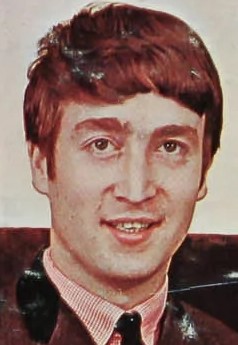 With “One After 909,” the listener actually gets to experience both at the same time, the only example in which this can actually be done. This original Lennon composition is noteworthy for being the earliest original Beatles composition to be played by the band, dating back as far as the “Quarry Men” days of 1957 with only John in the group, then with John and Paul later in the year, and then in 1958 when George became a member. When Ringo joined in September of 1962, he also became acquainted with the song and attempted to record it with the others in March of 1963. With “One After 909,” the listener actually gets to experience both at the same time, the only example in which this can actually be done. This original Lennon composition is noteworthy for being the earliest original Beatles composition to be played by the band, dating back as far as the “Quarry Men” days of 1957 with only John in the group, then with John and Paul later in the year, and then in 1958 when George became a member. When Ringo joined in September of 1962, he also became acquainted with the song and attempted to record it with the others in March of 1963.
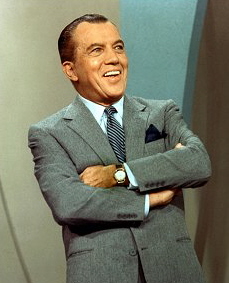 When John decided to resurrect “One After 909” for what became their final released album, fans of their later years got to witness a glimpse of the earliest throws of Beatlemania, unwittingly experiencing the excitement of the early fans who prefer the Ed Sullivan Beatles. In fact, when watching the rooftop footage of them performing the song on the “Let It Be” movie, one can easily imagine this as a Beatles performance on Ed Sullivan Show...minus the longer hair and different clothes, of course! When John decided to resurrect “One After 909” for what became their final released album, fans of their later years got to witness a glimpse of the earliest throws of Beatlemania, unwittingly experiencing the excitement of the early fans who prefer the Ed Sullivan Beatles. In fact, when watching the rooftop footage of them performing the song on the “Let It Be” movie, one can easily imagine this as a Beatles performance on Ed Sullivan Show...minus the longer hair and different clothes, of course!
Song Summary
“One After 909”
Written by: John Lennon / Paul McCartney
- Song Written: 1957
- Song Recorded: January 30, 1969
- First US Release Date: May 18, 1970
- First US Album Release: Apple #AR-34001 “Let It Be”
- British Album Release: Apple #PCS 7096 “Let It Be”
- US Single Release: n/a
- Highest Chart Position: n/a
- Length: 2:52
- Key: B major
- Producer: George Martin, Phil Spector
- Engineers: Glyn Johns, Alan Parsons
Instrumentation (most likely):
- John Lennon - Lead Vocals, Rhythm Guitar (1965 Epiphone ES-230TD Casino)
- Paul McCartney - Bass (1963 Hofner 500/1), harmony vocals
- George Harrison - Lead Guitar (1968 Fender Rosewood Telecaster)
- Ringo Starr - Drums (1968 Ludwig Hollywood Maple)
- Billy Preston - Electric Piano (1968 Fender Rhodes Seventy-Three Sparkle Top)
Written and compiled by Dave Rybaczewski
|
IF YOU WOULD LIKE TO MAKE A DONATION TO KEEP THIS WEBSITE UP AND RUNNING, PLEASE CLICK BELOW!
Sign Up Below for our MONTHLY BEATLES TRIVIA QUIZ!
|